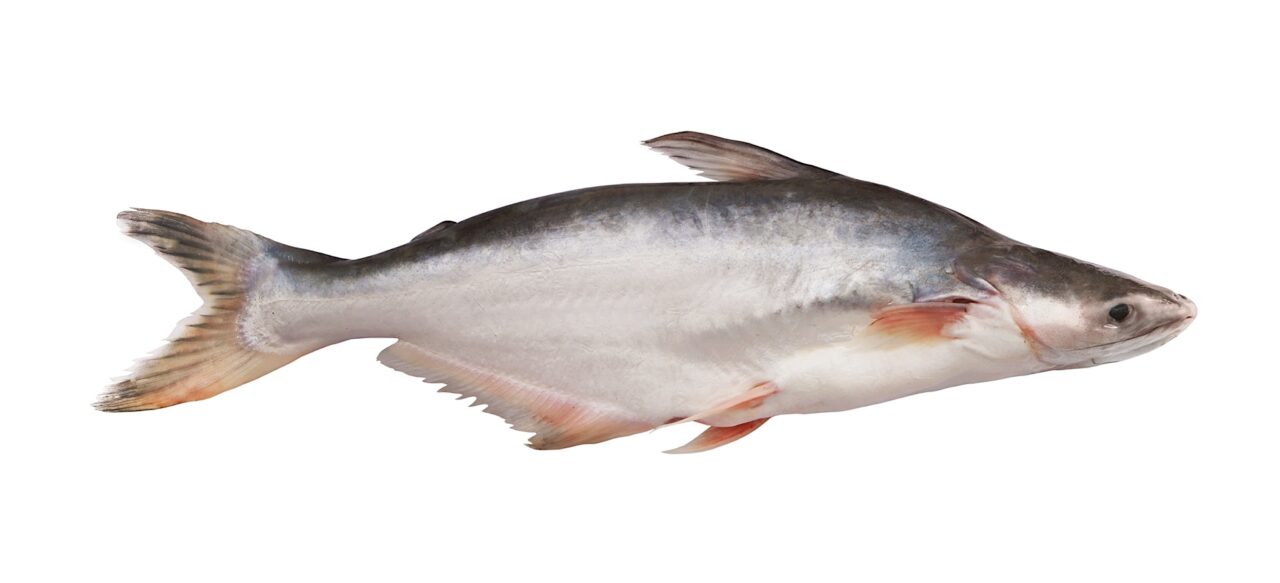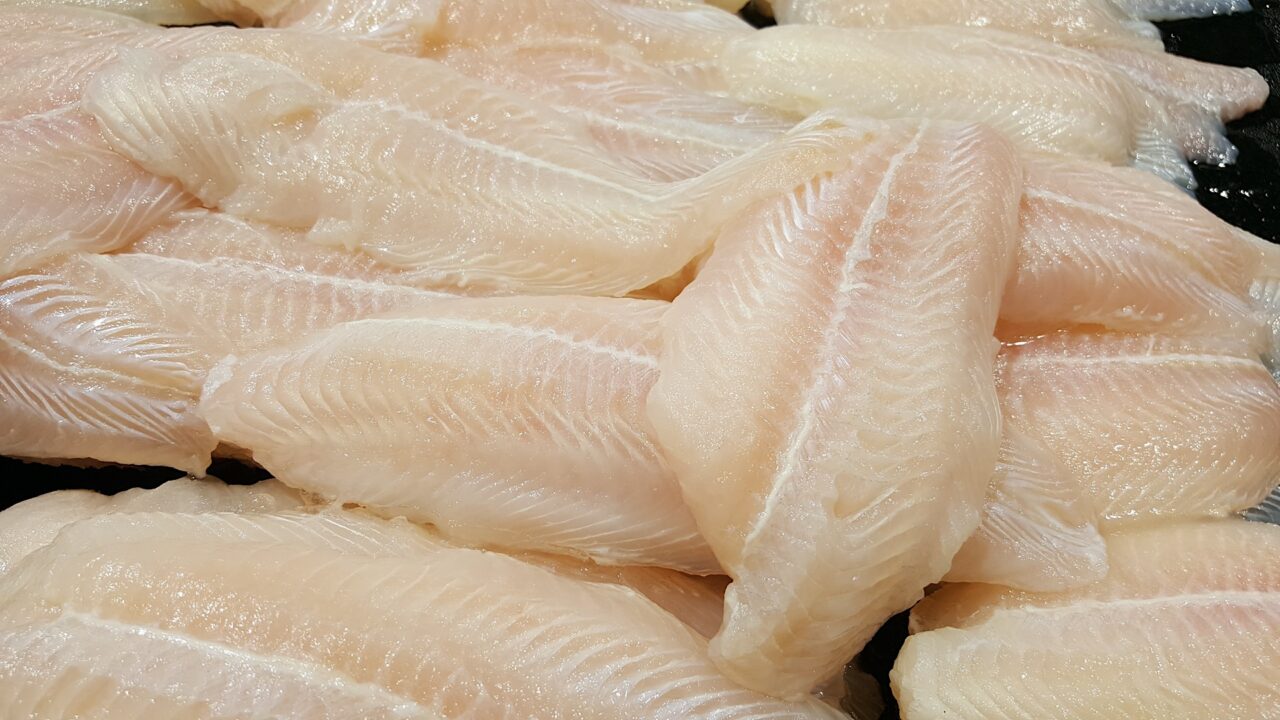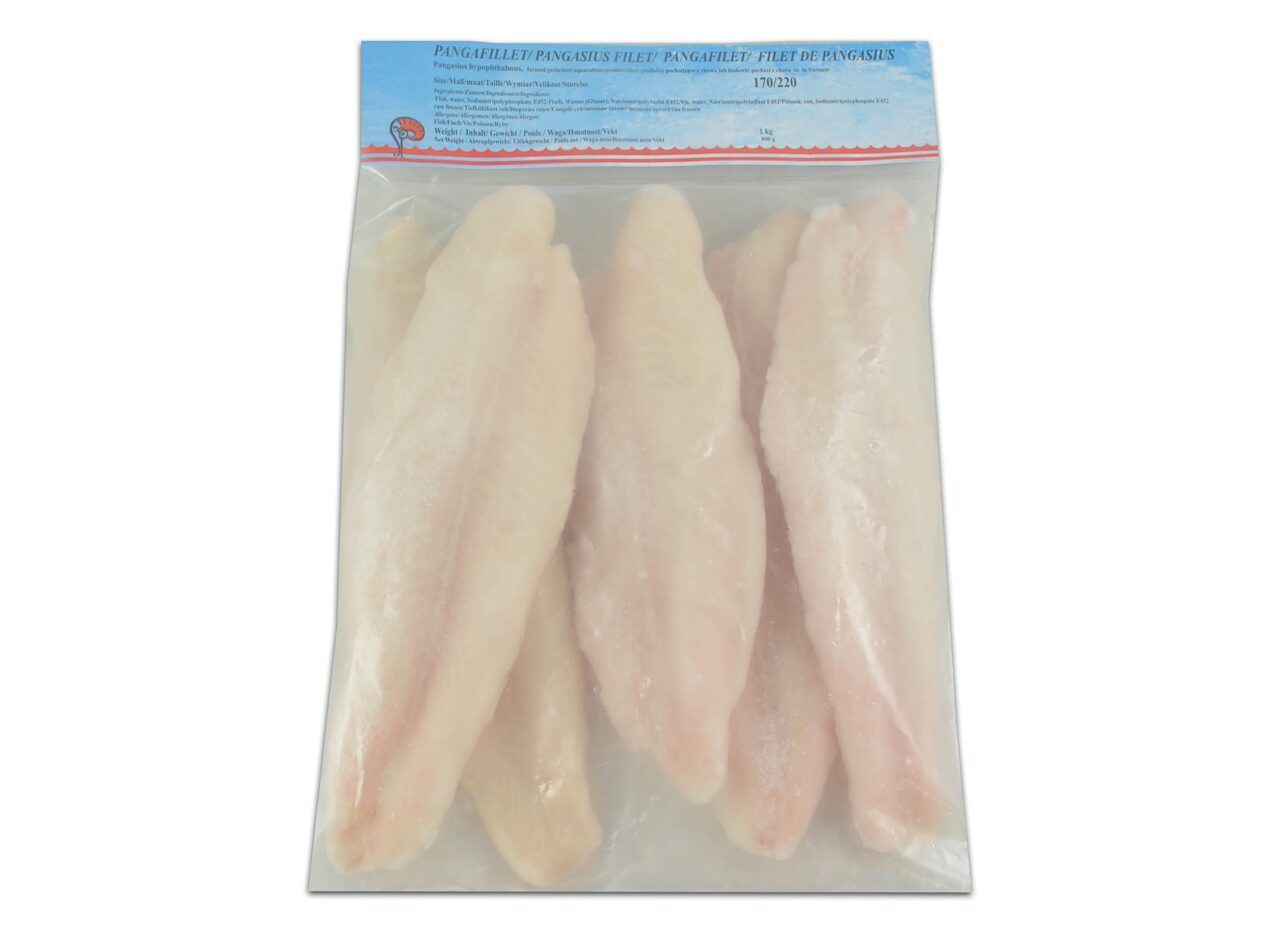Nederlands
English
Deutsch
Français
Pangasius is perhaps the most popular farmed fish at the moment. The fish is not a specifically Dutch speciality, but because of its neutral taste and easy preparation, more and more supermarkets in the Netherlands have been stocking pangasius in recent years.
Pangasius is also available in many fish shops, sold in many different varieties: fresh, frozen, fried with sweet and sour sauce and fresh vegetables, as a fish paste or baked as a cheaper variant of the popular kibbling – the options with pangasius are endless.
Are you a buyer looking for pangasius, and are you looking for good quality? In this article, we describe the origin of pangasius and what you should pay attention to in terms of quality when ordering this popular product.
The topics covered in this article include:
Pangasius belongs to the giant catfish family. The fish is often referred to as Panga catfish, or simply as ‘panga’, but these aren’t official names. The Panga is a ray-finned fish from the sea bream family. In addition, you sometimes see pangasius in stores under the name of Asian sole, but this is also incorrect. Pangasius is not a flatfish like sole and is, therefore, a lot cheaper.
So what does a pangasius look like? When fully grown, pangasius can reach a maximum length of three metres. However, the appearance of the pangasius is somewhat more pointed than that of the catfish, and the pangasius has beautiful, shiny fins. In the United States, pangasius is also called iridescent shark, iridescent catfish or striped catfish.

The giant catfish family has more than twenty different species, the most popular being Pangasius Hypophthalmus. The original pangasius is a migratory fish species that mainly occurs in fresh and brackish waters in the tropical river areas of Southeast Asia. However, the pangasius that we sell in supermarkets in the Netherlands is always a farmed variety.
Pangasius is mainly farmed in the Mekong Delta in Vietnam, close to the city of Ho Chi Minh. Pangasius is farmed in large ponds, two to three metres deep, dug alongside the Mekong River. These breeding ponds contain up to a hundred thousand fish per pond – very impressive!
Pangasius fish are caught when they reach one kilo. This can happen after just six months, but they are usually ‘harvested’ after eight to ten months. After being caught, they are immediately transported to massive, modern and hygienic factories. Transit takes a maximum of 1.5 to 2 hours before they are freshly filleted and packaged in the factories. The panga fillets are then frozen at -80 °C and shipped to clients worldwide. It does not get any fresher than that!
Vietnam exports pangasius to more than 80 countries. Europe is the largest buyer of pangasius fillets from Vietnam, the Netherlands being one of the most important importers. In recent years, the farming of pangasius business has grown a hundredfold. As many as eight million people in Vietnam are directly or indirectly involved in the farming of pangasius
There are many negative stories about pangasius: the fish are said to be full of antibiotics and other undesirable substances, swimming around in polluted water and are farmed in appalling conditions. These are all fables based on half-truths. But what are the facts, and which are fables?
To be allowed to be sold in the Netherlands, the imported pangasius must comply with many regulations. All fish that are imported are checked. Therefore, the fish can’t be full of antibiotics and undesirable substances. If the fish does contain antibiotics, no matter how small the amount, it is pulled from the market. The amount of remaining undesirable substances in the pangasius that is ordinarily consumed is not harmful.
The cultivation of the popular pangasius is of enormous commercial importance in Vietnam. As mentioned earlier, no fewer than eight million inhabitants are directly or indirectly involved in the entire farming process. If the farming of pangasius were to stop, many people would not have a job. Dutch fish importers must adhere to strict laws and regulations concerning importation. There is also a joint code of conduct. This code sets additional requirements for, among other things, product quality, transparency, the environment, and also social conditions.
So it is untrue that the farmed pangasius is not suitable for consumption. However, it is important to pay close attention to where the fish comes from and whether it has a sustainability label.
The pangasius is not only a fish for responsible consumption. It is also sustainably farmed as there is hardly any waste involved in the entire pangasius farming process.
The diet consists mainly of plant-based foods. In addition, the pangasius only needs 1.6 kilos of food before the fish is fully grown and ready to process – and all this in just a few months. That is truly unique: no other fish species in the world requires so little food and time to reach maturity. This alone makes the pangasius fish a responsible farming choice.
But there’s more… the manure from the ponds in which the pangasius is grown is regularly pumped out and used to fertilise the adjacent rice fields. This way, little to nothing is wasted or thrown away, and the circle is completed.
In short: the pangasius is a good, sustainable alternative to the many other overfished fish species.

It’s important to always buy frozen pangasius; fresh pangasius transported by plane from Vietnam has a much heavier ecological footprint. When purchasing pangasius, also make sure that the fish has an ASC label, a label for responsibly and sustainably farmed seafood, like the MSC label is for wild fish. ASC is an independent and reliable body committed to sustainability and minimisation of the ecological impact of aquaculture.
Discover the full range of pangasius products from Mooijer-Volendam. Are you curious about the full range of pangasius products from Mooijer-Volendam? At Mooijer-Volendam, we have a diverse range of sustainable pangasius products, such as frozen panga steaks, and panga fillets in various sizes and quantities. All our pangasius products bear the ASC quality mark.

Are you looking for good quality pangasius products? Then you’ve come to the right place. As a wholesaler, Mooijer-Volendam sets high standards for its quality, as do we with all our pangasius products. Our clients can rely on AAA product quality, something that our clients also demand from us.
That is why more and more clients know how to find us as a catering wholesaler or as a wholesaler for fishmongers, speciality stores and large retailers.
Are you curious about all our pangasius products?